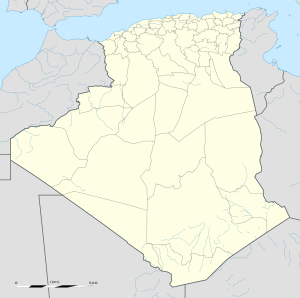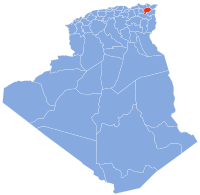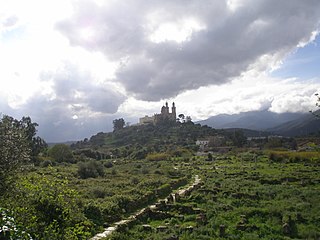
Hippo Regius is the ancient name of the modern city of Annaba, Algeria. It historically served as an important city for the Phoenicians, Berbers, Romans, and Vandals. Hippo was the capital city of the Vandal Kingdom from 435 to 439 AD. until it was shifted to Carthage following the Vandal capture of Carthage (439).

The history of North Africa during the period of classical antiquity can be divided roughly into the history of Egypt in the east, the history of ancient Libya in the middle and the history of Numidia and Mauretania in the West.

Annaba, formerly known as Bon, Bona and Bône, is a seaport city in the northeastern corner of Algeria, close to the border with Tunisia. Annaba is near the small Seybouse River and is in the Annaba Province. With a population of about 464,740 (2019) and 1,000,000 for the metropolitan area, Annaba is the third-largest city and the leading industrial center in Algeria.

Guelma Province is a province (wilaya) in eastern Algeria. Its namesake is its seat and most populous municipality: Guelma.

Souk Ahras is a province (wilaya) in the Aures region in Algeria, named after its capital, Souk Ahras. It stands on the border between Algeria and Tunisia. In 2008, Souk Ahras had a population of 440,299 people.
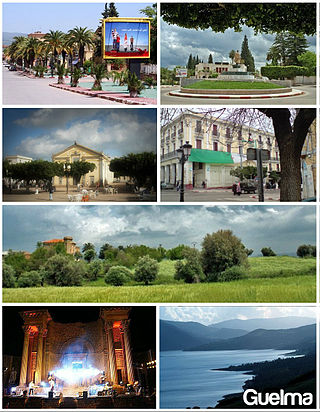
Guelma is the capital of Guelma Province and Guelma District, located in north-eastern Algeria, about 65 kilometers from the Mediterranean coast. Its location corresponds to that of ancient Calama.

Khamissa, ancient Thubursicum Numidarum or Thubursicum, is an Ancient Roman and Byzantine archeological site, in Souk Ahras Province of northeastern Algeria.

Thagaste was a Roman-Berber city in present-day Algeria, now called Souk Ahras. The town was the birthplace of Saint Augustine.

Chetaïbi is a small fishing port in Annaba Province, Algeria located on a peninsula west of Annaba.

Souk Ahras is a municipality in Algeria. It is the capital of Souk Ahras Province. The Numidian city of Thagaste, on whose ruins Souk Ahras was built, was the birthplace of Augustine of Hippo and a center of Berber culture.
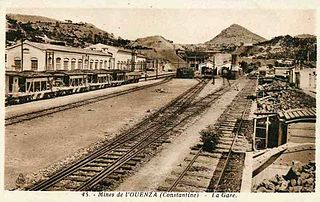
Ouenza is a town in Tébessa Province, in far eastern Algeria; near the border with Tunisia; 43 km south of Souk Ahras; and west of M'Daourouch.

Guelma District is an Algerian district in Guelma Province, in northeastern Algeria.

El Amra is a town in northern Algeria.

Damous is a town and commune in Tipaza Province in northern Algeria.
The Maghreb highway is a highway through the Maghreb region of North Africa. The highway is made up of an Atlantic main road, and a Mediterranean main road.
Mertoutek is a village in the commune of Idlès, in Tazrouk District, Tamanrasset Province, Algeria. It lies in the northern Hoggar Mountains on the eastern side of a wadi, 61 kilometres (38 mi) northwest of the town of Idlès and 158 kilometres (98 mi) north of Tamanrasset.

Calama was a colonia in the Roman province of Numidia situated where Guelma in Algeria now stands.
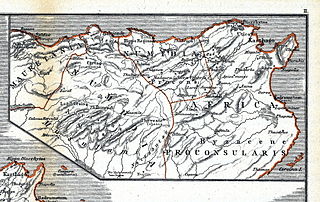
Numidia was a Roman province on the North African coast, comprising roughly the territory of north-east Algeria.
Tipasa, distinguished as Tipasa in Numidia, was a town in the Roman province of Numidia in North Africa. Its ruins are located 957 meters (3,140 ft) above sea level near present-day Tifesh in Constantine Province, Algeria, 88 kilometers (55 mi) south of Annaba.
Nacéra Benseddik is an Algerian historian, archaeologist and epigrapher. She was born in Bordj Bou Arreridj on 4 December 1949.


